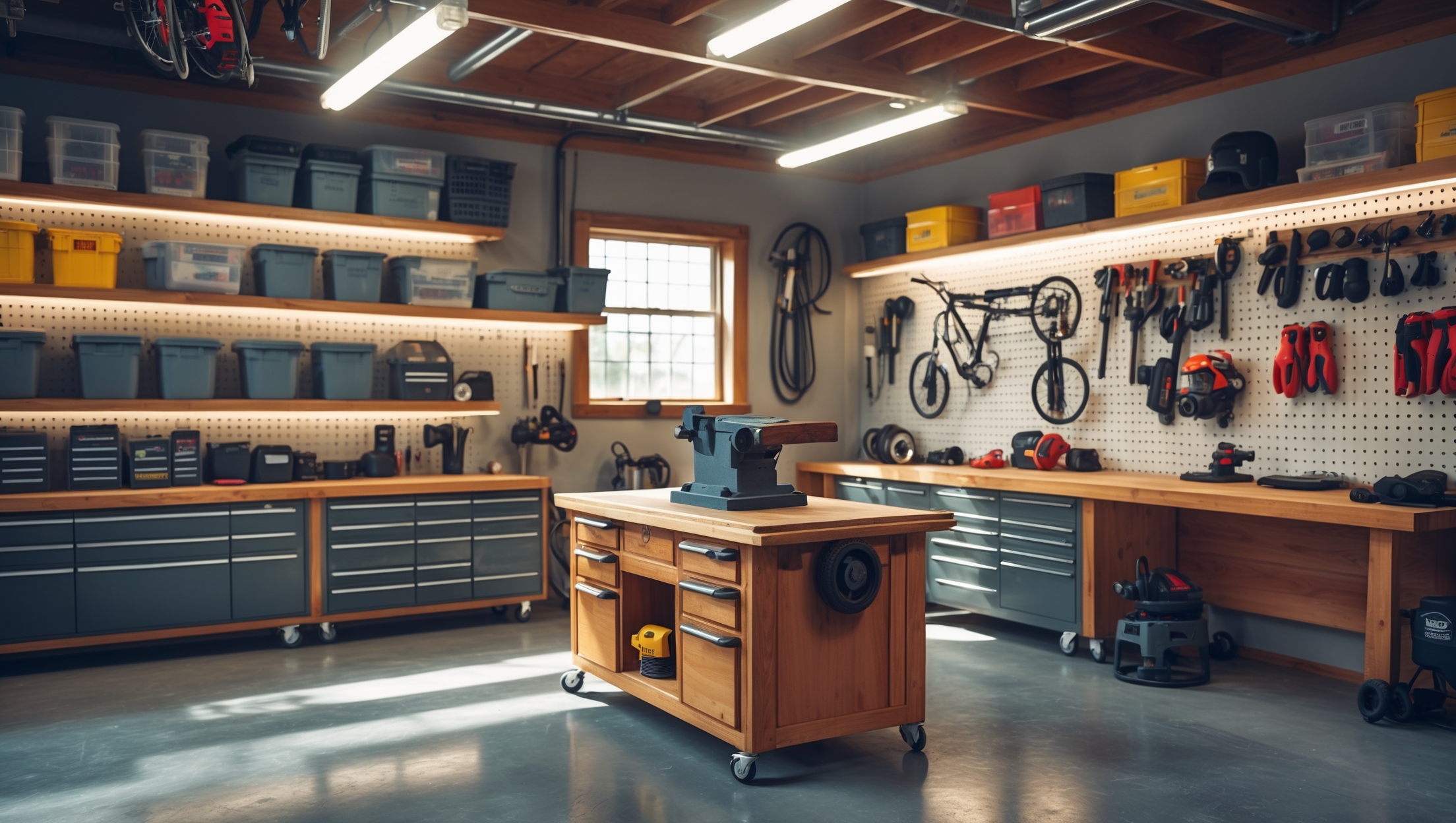Introduction: Why Seasonal Home Maintenance Matters
Homeownership comes with a long list of responsibilities, and while renovations and upgrades tend to get most of the attention, it’s the regular, seasonal maintenance that protects your investment over the long term. Ignoring routine care can lead to costly repairs, safety hazards, and even insurance issues. Developing a quarterly home maintenance routine helps you catch small problems before they become big headaches, keeps your home running efficiently, and preserves its value.
Each season brings unique weather conditions and challenges, from spring’s heavy rains to winter’s freezing temperatures. By breaking up your home’s care into manageable quarterly tasks, you’ll be able to tackle everything without feeling overwhelmed. This comprehensive guide walks you through what to inspect, clean, and repair every quarter. Whether you’re a first-time homeowner or a seasoned pro looking to refine your routine, you’ll find practical advice, checklists, and expert tips for each time of year.
Spring Checklist: Renewal and Inspection
1. Inspect Roof and Gutters
Winter weather can wreak havoc on your roof and gutters. As soon as the snow and ice have melted, examine your roof for missing shingles, damaged flashing, or signs of leaks. Clean out gutters and downspouts to ensure proper drainage. Clogged gutters can cause water to back up and damage your roof, siding, and foundation.
- Check for loose or missing shingles
- Inspect flashing around chimneys and vents
- Clear out leaves and debris from gutters and downspouts
- Make sure gutters are securely attached
2. Service HVAC System
Before the heat of summer arrives, schedule a professional HVAC tune-up. Change filters, clean vents, and make sure your system is running efficiently. This improves air quality and extends the life of your equipment.
- Replace or clean air filters
- Clear debris from around outdoor units
- Test air conditioning for proper function
- Schedule a professional inspection if needed
3. Inspect Exterior Walls and Foundation
Walk around your home and check for cracks or gaps in the foundation, siding, and masonry. Early detection prevents water infiltration and pest issues.
- Seal any visible cracks or gaps
- Look for signs of termite or pest damage
- Touch up paint and caulking as necessary
4. Lawn and Garden Prep
Spring is the time to revive your yard. Rake up winter debris, aerate the lawn, and address any bare spots. Prune trees and shrubs, and check irrigation systems for leaks or damage.
- Apply fertilizer and weed control
- Inspect and repair irrigation systems
- Mulch flower beds to retain moisture
5. Safety Equipment Check
Test smoke and carbon monoxide detectors, and replace batteries as needed. Inspect fire extinguishers for expiration dates and pressure levels.
Summer Checklist: Maintenance and Upgrades
1. Inspect Windows and Doors
Hot weather can cause windows and doors to swell or warp. Check seals and weatherstripping to prevent energy loss and insect entry.
- Replace worn or cracked weatherstripping
- Lubricate hinges and locks
- Clean screens and check for holes
2. Deck and Patio Care
Summer is prime time for outdoor living. Examine decks, patios, and porches for loose boards, nails, or signs of rot. Power wash surfaces and apply sealant if needed.
- Tighten loose boards or railings
- Check for signs of termite or water damage
- Clean and reseal surfaces as recommended
3. Plumbing Review
Summer storms can stress your plumbing. Inspect for leaks under sinks, around toilets, and at the water heater. Test your sump pump if you have one.
- Check for visible leaks
- Look for moisture or water stains
- Flush your water heater to remove sediment
- Test the sump pump by pouring in water
4. Pest Control Measures
Warm weather brings increased insect and rodent activity. Seal entry points around the home and keep food sealed tightly.
- Inspect attic and basement for signs of pests
- Seal cracks and holes in foundation and walls
- Schedule professional pest control if needed
5. Check Attic and Insulation
High summer heat can reveal insulation issues. Inspect for adequate coverage and look for signs of water or pest intrusion.
Fall Checklist: Preparation and Prevention
1. Clean and Inspect Gutters Again
Falling leaves can clog gutters quickly. Clean them out and check for proper drainage before winter storms hit.
2. Winterize Outdoor Faucets and Sprinklers
Prevent frozen pipes by draining and shutting off outdoor faucets and irrigation systems.
- Disconnect garden hoses
- Drain and blow out sprinkler lines
- Add insulated covers to exposed faucets
3. Heating System Tune-Up
Before you turn on the heat for the season, have your furnace or boiler serviced. This ensures safe and efficient operation.
- Replace or clean furnace filters
- Test thermostat functions
- Check for unusual noises or odors
- Schedule professional maintenance if necessary
4. Chimney and Fireplace Inspection
If you have a fireplace, ensure it’s safe to use. Clean out ash, check the damper, and hire a professional to inspect and sweep the chimney if required.
5. Storm Preparation
Stock up on essentials, check emergency kits, and make sure your home is ready for severe weather. Trim trees away from the house to prevent storm damage.
- Secure loose items in the yard
- Test backup generators
- Check sump pump operation
Winter Checklist: Protection and Efficiency
1. Monitor for Ice Dams and Snow Buildup
Keep an eye on your roof for excessive snow or ice dams, which can cause leaks and structural damage. Use a roof rake to remove snow safely if needed.
2. Check for Drafts and Insulate
Cold weather exposes air leaks. Use weatherstripping, caulk, and insulation to seal drafts around windows, doors, and outlets.
- Install draft stoppers under doors
- Check attic insulation depth and condition
- Close fireplace dampers when not in use
3. Test Carbon Monoxide Detectors
Heating appliances can increase carbon monoxide risk. Test all detectors and replace batteries as needed. Have gas fireplaces and stoves inspected annually.
4. Protect Plumbing
Prevent frozen pipes by wrapping exposed lines with insulation and keeping a trickle of water running during extreme cold snaps.
- Open cabinet doors under sinks to allow warm air flow
- Know how to shut off water in case of burst pipes
5. Emergency Preparedness
Keep flashlights, batteries, and blankets handy. Ensure that fire extinguishers are accessible and charged.
Essential Tools for Seasonal Maintenance
Stocking your toolkit makes quarterly maintenance much easier. Here are some must-haves:
- Ladder (extendable and step ladder)
- Gloves and safety glasses
- Basic hand tools (hammer, screwdrivers, pliers, wrench)
- Caulking gun and sealant
- Gutter scoop and hose
- Power washer
- Leaf rake and snow shovel
- Smoke and CO detector tester
Pro Tips for Staying on Track
- Use a Calendar: Set recurring reminders for quarterly tasks.
- Make a Checklist: Print out or use a digital checklist for each season and check off completed items.
- Document Issues: Keep a maintenance log with dates, repairs, and service provider details.
- Budget for Maintenance: Set aside 1-3% of your home’s value annually for upkeep to avoid financial surprises.
Conclusion: Protecting Your Home Year-Round
Regular, seasonal home maintenance isn’t just about keeping your property looking its best—it’s about safeguarding your investment, protecting your family, and preventing expensive problems down the road. By following a quarterly checklist, you’ll stay ahead of the most common issues that plague homeowners: water leaks, HVAC failures, pest infestations, and energy loss. Each season brings its own set of challenges, but with a systematic approach, you can address them confidently and efficiently.
Remember, maintenance is a proactive process. Catching minor issues before they escalate saves money, stress, and time. It also ensures that your home remains comfortable, safe, and welcoming through every season. As you implement these checklists, you’ll become more familiar with your home’s unique needs and quirks, making future maintenance even smoother. Don’t hesitate to call in professionals for inspections or repairs outside your skill set—some investments, like a well-serviced HVAC system or properly maintained roof, pay for themselves many times over.
Whether you’re preparing for spring rains, summer heat, fall storms, or winter’s cold, these quarterly checklists will keep your home in peak shape and ready for whatever the year brings. Happy maintaining!




